How to wake up bass
Bulge shallow crankbaits at the surface for an explosive springtime bite
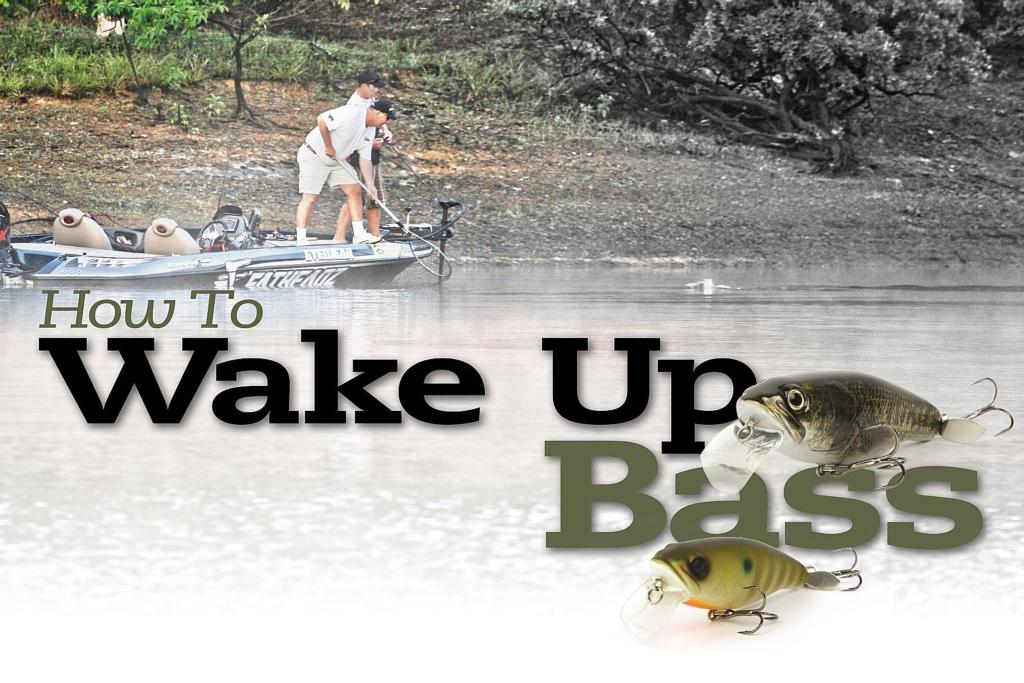
(Editor’s note: This article originally appeared in the 2013 April issue of Bass Fishing magazine. To read more compelling articles from Bass Fishing magazine each month, become an FLW subscriber member. If you’d like to sign up for a digital subscription to access articles online, click here).
 Just as the best bass pros are multidimensional, sometimes the best lures are too. Take shallow crankbaits for example. Not only can they dive and deflect off cover; many can also be made to wake the surface. Wakebaiting is a technique that lies somewhere between cranking and topwater fishing, but whatever the definition, it excels when other crankbait patterns flicker in effectiveness.
Just as the best bass pros are multidimensional, sometimes the best lures are too. Take shallow crankbaits for example. Not only can they dive and deflect off cover; many can also be made to wake the surface. Wakebaiting is a technique that lies somewhere between cranking and topwater fishing, but whatever the definition, it excels when other crankbait patterns flicker in effectiveness.
While floating stick baits such as the Cotton Cordell Red Fin and Bomber Long A have long been associated with wakebaiting, it’s the shallow square-bill style wakebait that actually has more applications in a broader range of waters.
 Shallow crankbaits might seem awkwardly suited for this duty. Blunt-nosed and wide-bodied, their basic design contradicts the sleek, minnow-mimicking profile of stick baits. Yet a growing number of pros have become avid fans of wakebaiting, including two Forrest Wood Cup champions, Jacob Wheeler and Keystone Light pro Brent Ehrler. We asked them to explain why the fat-bodied wakers often get the nod over other springtime favorites.
Shallow crankbaits might seem awkwardly suited for this duty. Blunt-nosed and wide-bodied, their basic design contradicts the sleek, minnow-mimicking profile of stick baits. Yet a growing number of pros have become avid fans of wakebaiting, including two Forrest Wood Cup champions, Jacob Wheeler and Keystone Light pro Brent Ehrler. We asked them to explain why the fat-bodied wakers often get the nod over other springtime favorites.
Wakebaiting the spawn
“In springtime, shallow fish react better to something a little more subtle,” Wheeler observes. “That’s when bushes, weeds, laydowns and other forms of cover are often flooded, too. Fish are up shallow, roaming around, on beds and guarding fry. They tend to react better to subtle presentations rather than those that create a lot of commotion.”
Wakebaits played a critical role in Wheeler’s fast start in his 2012 rookie campaign. At the Walmart FLW Tour event on Table Rock Lake in late March, he relied on the technique as bass flocked to the shallows to spawn.
“They were incredibly hard to catch because the water was dropping and they were getting a lot of pressure,” recalls Wheeler. “The fish had seen so many [Yamamoto] Senkos, lizards and crawdads that you had to come up with something different to catch them. That’s when I figured out that they would eat a Rapala DT Fat 1 on top.
Once I had located a bed, I could back off of it and cast in there to catch them.”
Wheeler slowly cranked a DT Fat 1 over the beds so that it wobbled just under the surface, creating a bulge-like wake. The presentation accounted for his two largest fish on the first day and nearly his entire catch on day two. He finished 28th.
The young pro believes that the DT Fat 1 is perfectly suited for wakebaiting for a few reasons. Its buoyant, balsa wood construction assures tracking immediately under the surface film of the water, creating a bulging, V-shaped wake. A bulbous profile allows the crankbait to rotate up on its side at slower speeds compared to models crafted into alternative shapes. Rotation flashes the two-tone color pattern to create a more visually attractive presentation.
Wakebaiting the spawn – the players
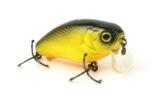 Jackall Cherry 0 Footer 56 (2 1/4 inches, 3/8 ounce) and Aragon SSR (2 1/2 inches, 3/8 ounce) – The Aragon is a jointed super-shallow runner, while the Cherry is a single-bodied lure. $14.99 (jackall-lures.com)
Jackall Cherry 0 Footer 56 (2 1/4 inches, 3/8 ounce) and Aragon SSR (2 1/2 inches, 3/8 ounce) – The Aragon is a jointed super-shallow runner, while the Cherry is a single-bodied lure. $14.99 (jackall-lures.com)
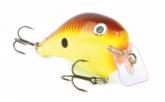 Rapala DT Fat 1 (2 3/4 inches, 5/8 ounce) – The DT Fat 1 is Wheeler’s go-to wakebait. The series features a natural rolling action, no internal rattle and balsa construction. $8.99 (rapala.com)
Rapala DT Fat 1 (2 3/4 inches, 5/8 ounce) – The DT Fat 1 is Wheeler’s go-to wakebait. The series features a natural rolling action, no internal rattle and balsa construction. $8.99 (rapala.com)
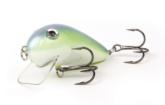 Norman Square Bill Wake (2 1/2 inches, 3/8 ounce) – Introduced in the 1970s, the WK2 is one of the original crankbait-style wakebaits. $4 (normanlures.com)
Norman Square Bill Wake (2 1/2 inches, 3/8 ounce) – Introduced in the 1970s, the WK2 is one of the original crankbait-style wakebaits. $4 (normanlures.com)
Warm-water applications
Early in his career, Ehrler, a California native, also waked shallow crankbaits. He found success with it when chasing postspawn and summer bass on tidal fisheries such as the California Delta, and for many of the same reasons that wakebaits excel in shallow, weedy reservoirs and natural inland lakes.
“I quickly learned that wakebaits can be deadly in high-tide periods when a gap develops between the water surface and the top of the weeds,” he explains. “In those situations, I like to identify pockets and paths within the grass beds and along outside edges where bass position to ambush bait. It seems to be most effective in warmer water – temperatures above 60 degrees – when other topwater lures come into play, too. Basically, it’s a great alternative to a buzzbait.”
Ehrler’s favorite wakebait is the Lucky Craft Fat CB SSR (Super Shallow Runner), which he enhances by adding a trailer. He assembles the trailer by attaching an Owner Centering Pin Spring (CPS) to the rear split ring above the treble hook and screwing on a finesse worm or lizard.
“The trailer really gives it a cool look, similar to a jointed, floating swimbait,” he says. “The action is a lot like the [Mike Shaw] MS Slammer swimbait, which is two chunks of wood with a rubber tail on the end. When waked under the surface, the tail kicks, flops and turns.”
A 4- or 5-inch Yamamoto Kut Tail Worm and a 4- to 6-inch soft-plastic lizard are Ehrler’s trailers of choice. On big-bass waters, such as the California Delta, Ehrler is partial to lures with beefier profiles.
When the water warms – the players
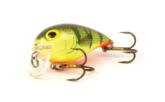 Storm SubWart (No. 4 – 1 1/2 inch, 3/16 ounce and No. 5 – 2 inches, 5/16 ounce) – This workmanlike crankbait is a shallow-water, waking version of the Storm Original Wiggle Wart. $5.99 (stormlures.com)
Storm SubWart (No. 4 – 1 1/2 inch, 3/16 ounce and No. 5 – 2 inches, 5/16 ounce) – This workmanlike crankbait is a shallow-water, waking version of the Storm Original Wiggle Wart. $5.99 (stormlures.com)
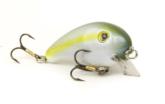 Strike King Pro-Model Xtra Shallow Series 1XS (2 inches, 3/8 ounce) – Available with free-floating rattles, the Xtra Shallow features a medium wobble. $4.99 (strikeking.com)
Strike King Pro-Model Xtra Shallow Series 1XS (2 inches, 3/8 ounce) – Available with free-floating rattles, the Xtra Shallow features a medium wobble. $4.99 (strikeking.com)
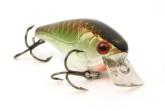 Luck “E” Strike RC2 Series 4 (2 3/4 inches, 5/8 ounce) – Because this model doesn’t have rattles, it’s a good choice for clear, shallow water when a silent, subtle approach is likely to be more effective. Twenty-four color patterns are available. $6.95 (luck-e-strike.us)
Luck “E” Strike RC2 Series 4 (2 3/4 inches, 5/8 ounce) – Because this model doesn’t have rattles, it’s a good choice for clear, shallow water when a silent, subtle approach is likely to be more effective. Twenty-four color patterns are available. $6.95 (luck-e-strike.us)
 Evergreen Combat Crank TC-60 (2 1/4 inches, 5/8 ounce) – Evergreen International, a leading Japanese tackle company, manufactures this West Coast favorite. It’s distributed in the U.S. through Baitdomain. $22.99 (evergreenusa-bd.com)
Evergreen Combat Crank TC-60 (2 1/4 inches, 5/8 ounce) – Evergreen International, a leading Japanese tackle company, manufactures this West Coast favorite. It’s distributed in the U.S. through Baitdomain. $22.99 (evergreenusa-bd.com)
 Lucky Craft Fat CB SSR (3 1/4 inches, 5/8 ounce) and LC WK (1.5WK – 2 inches, 1/2 ounce; 2.5WK – 2 3/4 inches, 5/8 ounce; and 3.5WK – 3 inches, 3/4 ounce) – The Fat CB SSR is Ehrler’s favorite wakebait. The LC WK model is a jointed-body version of the popular LC series with a feathered rear treble. $15.99 to $16.99 (luckycraft.com)
Lucky Craft Fat CB SSR (3 1/4 inches, 5/8 ounce) and LC WK (1.5WK – 2 inches, 1/2 ounce; 2.5WK – 2 3/4 inches, 5/8 ounce; and 3.5WK – 3 inches, 3/4 ounce) – The Fat CB SSR is Ehrler’s favorite wakebait. The LC WK model is a jointed-body version of the popular LC series with a feathered rear treble. $15.99 to $16.99 (luckycraft.com)
Rigging and retrieves
Wheeler and Ehrler prefer to toss their wakebaits on traditional shallow-water cranking gear: 7-foot, moderate-action crankbait rods; heavy, 20-pound-test monofilament line; and 6:1 geared reels.
“Heavier monofilaments resist crankbait dive [to help keep the lure at the surface], while providing a little extra stretch in case you react too quickly on a hookset,” says Wheeler.
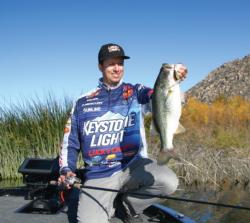 Both pros recommend that wakebait anglers adopt a steady, slow- to medium-speed retrieve. Stop-and-go retrieves are to be avoided, as erratic actions can entrap air along the bill, a form of cavitation that can cause the lure to immediately foul.
Both pros recommend that wakebait anglers adopt a steady, slow- to medium-speed retrieve. Stop-and-go retrieves are to be avoided, as erratic actions can entrap air along the bill, a form of cavitation that can cause the lure to immediately foul.
According to Ehrler, anglers should also be cognizant of their rod tip position throughout the retrieve, to assure that the lure rides just under the surface.
“The longer the cast, the higher you should keep your rod tip,” Ehrler explains. “That prevents the lure from diving too much. As it approaches the boat, you slowly lower the tip so that it doesn’t cause the bait to pop out of the water. It’s not like traditional crankbait or topwater retrieves where rod tip position is not as crucial.”
Wakebaits for pressured situations
Whether anglers consider a shallow crankbait to be a true wakebait or not, its effectiveness under the right conditions is undeniable. It creates a surface disturbance like no other lure, and its hookup ratio is outstanding. With fishing pressure mounting on lakes across the country, it’s become more important that anglers consider alternative techniques such as waking shallow crankbaits.
“A wakebait is underutilized in the bass fishing world,” Wheeler says. “When you can go out and throw something that is a tad bit different in a pressured area, you’d be surprised at the fish you can catch. And that is when a wakebait shines, in my opinion. It gets bites that other baits can’t, just because it’s more subtle, more natural, in the water.”
Speed of retrieve
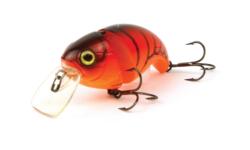 Not all wakebaits wake the same. Some snake lazily along, while many wobble side-to-side with pronounced rolling, wobbling movements. Some push a large wake that seems to float on the surface a great distance, while others create a sharper mini-wake that disappears more quickly.
Not all wakebaits wake the same. Some snake lazily along, while many wobble side-to-side with pronounced rolling, wobbling movements. Some push a large wake that seems to float on the surface a great distance, while others create a sharper mini-wake that disappears more quickly.
Speed of retrieve also affects the action. Many wakebaits can’t be made to stay on the surface at high speeds. Others barely dive even if you burn them, yet not all have the side-to-side movements that push a wake at slow, creeping speeds.
All this should be considered when choosing a wakebait. Sometimes a slow-moving wakebait that has a slow “fall over” action as it moves can tempt bass in chilly water or when conditions are tough. In that case, a wakebait that flashes its sides even at slow speeds is a good choice.
Other times a wakebait burned overhead prompts a reaction strike. You’ll need to choose a lure that can handle the speed without losing its action or going deeper than you want it to.
Finally, any wakebait that pushes a wide V-shaped wake and thumps nicely at any speed is a good one to have on hand, since it’s a more versatile option than one that only works at one end of the speed range.
Waking alternatives
While Keystone Light pro Brent Ehrler likens most shallow-cranking wakebaits to a topwater lure, such is not the case when deciding on alternative presentations for when a wakebait bite subsequently dies.
“When I’m throwing a topwater, it’s usually in open, clear water,” he says. “But, it’s different with wakebaiting. I’m usually throwing around cover, where traditional topwater alternatives like jerkbaits can’t be used. If I notice that I am getting a lot of follows on the wakebait [but they aren’t eating it], I’ll go with something that dives a foot or 2 subsurface, like the Lucky Craft LC 1.5.”
What’s your angle? – Tips for fishing a wakebait
Start the rod tip high at the beginning of the retrieve. Gradually lower it. This keeps the wakebait right at the surface.
Anatomy of a crankin’ wakebait
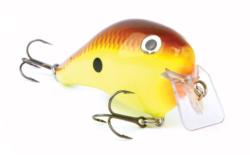 A buoyant, bulbous-shaped body facilitates a natural rolling motion and creates fish-attracting turbulence just beneath the surface of the water. Some models also feature a jointed body.
A buoyant, bulbous-shaped body facilitates a natural rolling motion and creates fish-attracting turbulence just beneath the surface of the water. Some models also feature a jointed body.
Silent or Rattling: Waking crankbaits are commonly offered in both rattling and silent versions.
Color: High-contrast, two-toned paint schemes allow bass to easily home in on this crankbait/pseudo topwater.
Bill: Aligned at an abrupt angle to the body, a small downturned bill imparts action without allowing the lure to dive, and provides excellent obstacle deflection.
Pivot Point: A frontward pivot point, established near the front treble hook, produces a pronounced tail kick.